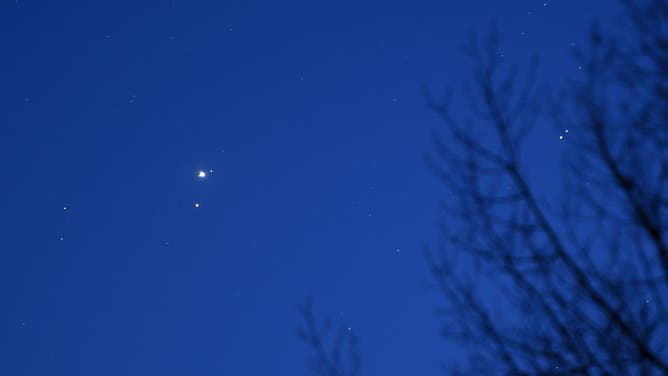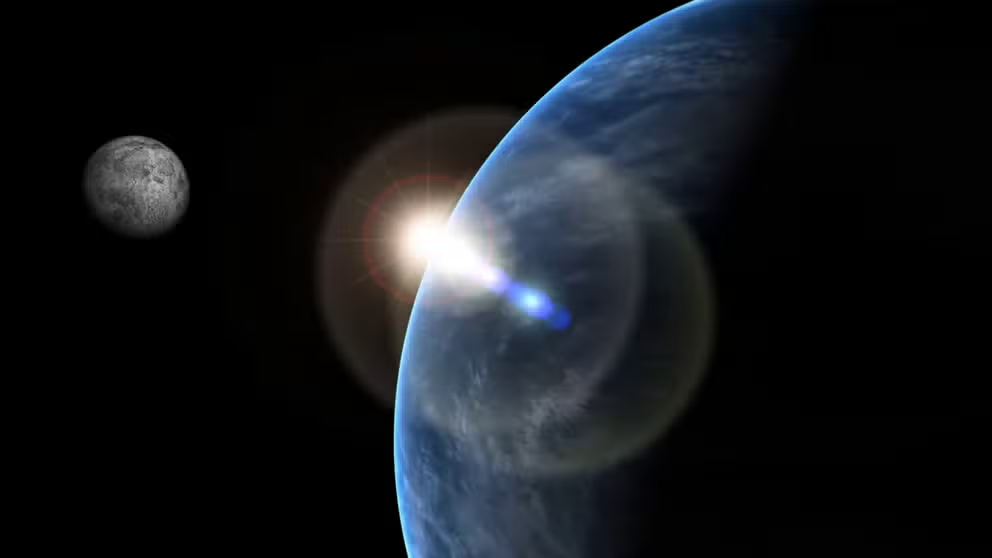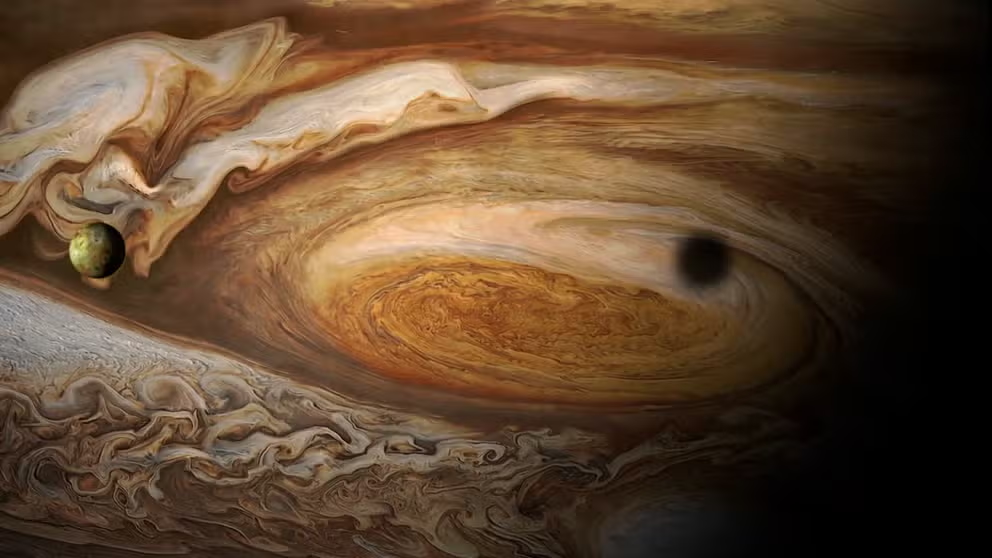No, Mars and Jupiter aren't on a collision course, but they'll appear awfully close
Astronomers say that conjunctions in our solar system happen frequently because planets travel around the Sun on a relatively similar ecliptic plane.
See what's new in the journey to reach the Moon
What's next for exploration of Earth's only natural satellite.
Stargazers watching Wednesday morning’s pre-sunrise sky will see the conjunction of Mars and Jupiter, a sight that may not appear as elegant again for many years.
The event, known as a conjunction, is fairly common among the planets of our solar system, as they all travel on a relatively similar ecliptic plane.
For instance, Saturn and Venus will appear close to each other in January, and Neptune and Venus will enter conjunction in February.
While the planets appear close to each other in the sky, it is actually an illusion, as they are hundreds of millions of miles apart.
In the case of Mars and Jupiter, they will be more than 350 million miles away from each other, but due to their brightness, this could be one of the more spectacular conjunctions.
"Planetary conjunctions traditionally have been more the stuff of astrology than serious astronomy, but they never fail to impress during observations, particular when the gas giants are involved," Mitzi Adams, an astronomer and researcher at NASA’s Marshall Space Flight Center in Huntsville, Alabama, said before a previous conjunction of the two planets.
WATCH OUT FOR THESE ASTRONOMICAL EVENTS

Jupiter (centre left) and Mars (centre left below) appear next to each other in the sky, above Ely in Cambridgeshire.
(Photo by Joe Giddens/PA Images via Getty Images / Getty Images)
The event coincides with the Perseid meteor shower, which is just coming off its peak activity.
One of the most anticipated meteor showers of the year, the Perseids, became active in mid-July and will last through late August.
Debris left over by Comet Swift-Tuttle is capable of producing up to 100 meteors per hour, making the Perseid meteor shower one of the best of the year.
According to astronomers, you won’t need binoculars or a telescope to see the meteor shower, but if you wish to observe details of either the rocky or gaseous planets, it is suggested you use optical aids.
Jupiter has dozens of moons and four sets of rings that are occasionally visible without an observatory, while Mars has two moons among its orange-brown hue.
COULD DUST BE USED TO COOL THE RED PLANET TO SUSTAIN LIFE?
The best views of the planets will be in the eastern sky, away from any light pollution, before daybreak.
The conjunction of Mars and Jupiter happens about every two years, but seeing the planets appear closer than the width of the Moon doesn’t occur during every conjunction.
If you miss the planetary event, August’s full Moon is right around the corner.
The eighth full Moon of the year will reach its peak brightness at 2:25 p.m. EDT on August 19, meaning North America will have to wait several hours until the Sun sets to see the lunar body in all its glory.
The Moon will appear slightly brighter and larger than usual because it will be a Supermoon.
Supermoons occur a few times a year when the Moon reaches its closest point to Earth in its orbit, known as perigee. During the event, the Moon will be less than 230,000 miles away.
Exploring Jupiter's Great Red Spot—the biggest storm in our solar system
Famous for its Great Red Spot, Jupiter is a gas giant with some of the most fascinating weather in the solar system.

